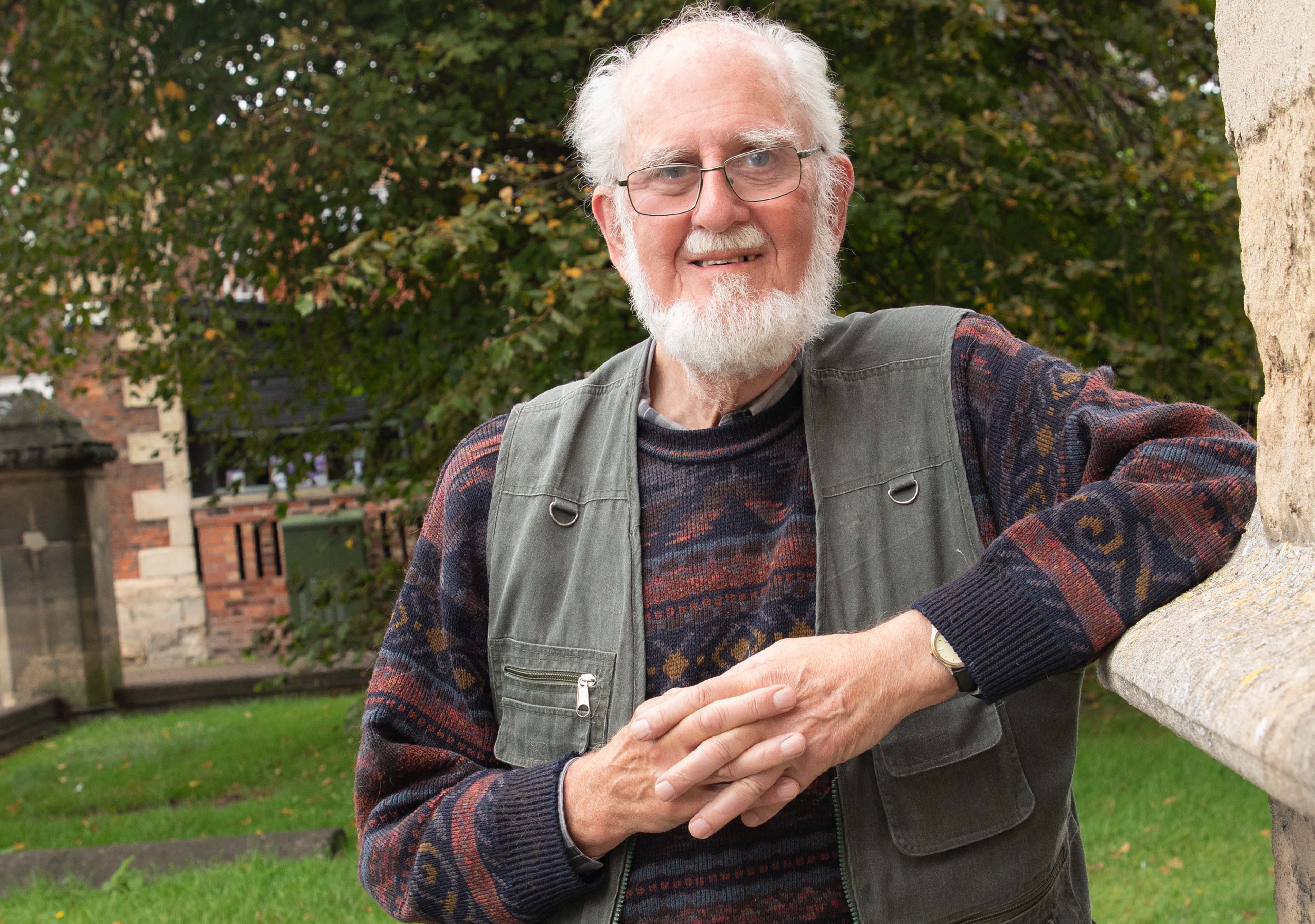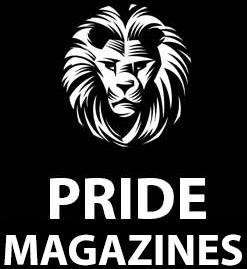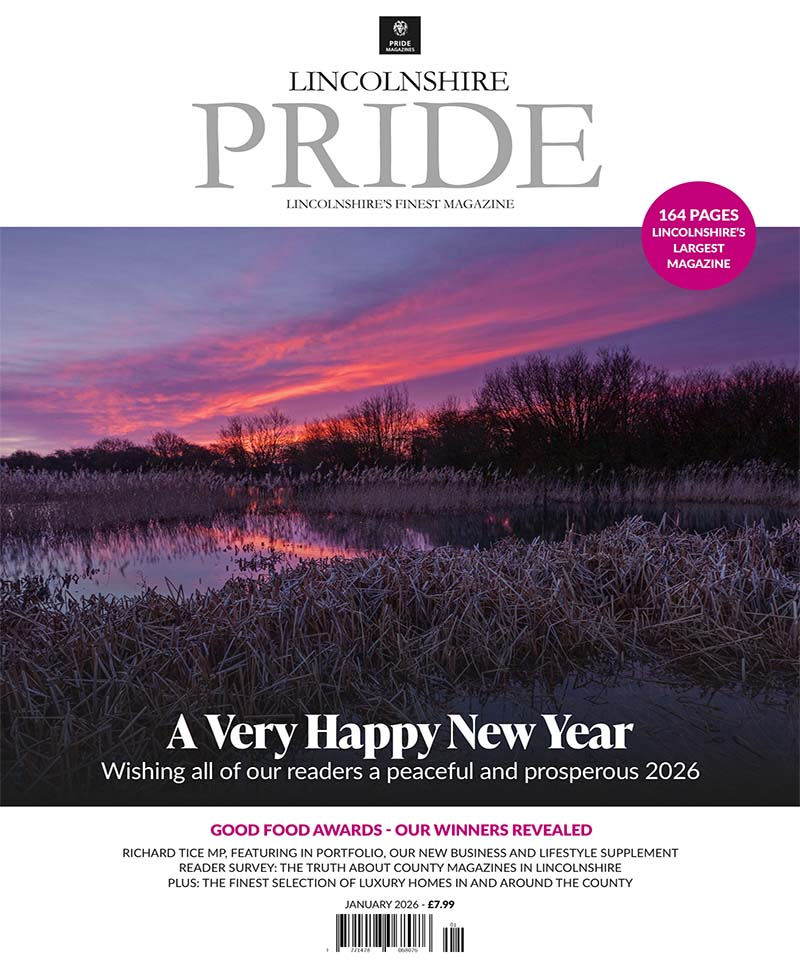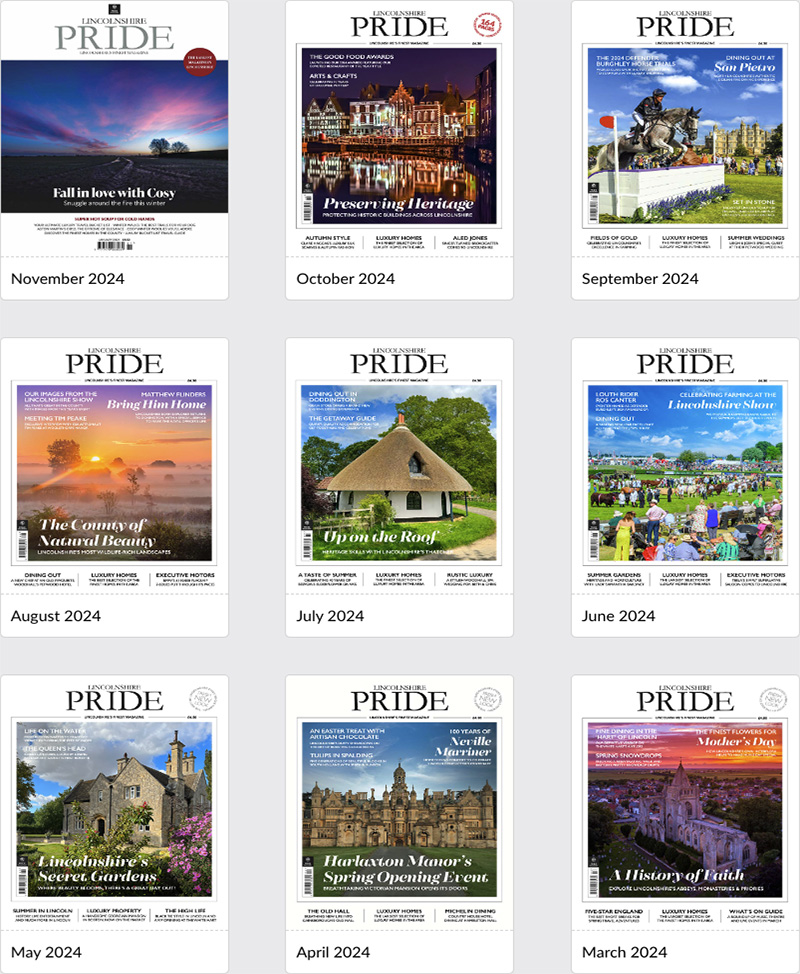
The Lincolnshire Dialect
Exploring the Lincolnshire accent and its dialects: nostalgia for natives and fascinating for frim folk!
Once upon a time you’d be born in a Lincolnshire village or town. You’d probably spend much of your life in a Lincolnshire village and your communication with others would extend no further than people with whom you share geography, culture… or by extension, language. Today though, from cars and trains to air transport, it’s unlikely that many of us will remain in the same place for long. In our working and personal lives, we’re a more itinerant and more untethered civilisation.
On the whole that’s a good thing, but we can’t help wondering if that means regional variations in accent and dialect will soon be less prevalent; perhaps some will even fall into obsolescence. With mass communications, and with more standardised spellings introduced with dictionaries and latterly spell-checkers, and with much of the world’s culture imported from America (by extension using the Latin alphabet and (alas) American English, communication is becoming much more uniform as we consume language from ever-more homogenous sources.
It’s thought that there are about 40 different accents in Britain, but nuances can creep in between these. In fact, one academic, David Crystal, reckons that language can even change noticeably as little as 25 miles away.
Even Lincolnshire, reckons Alan Stennett, language can change from wolds to fens. Alan was born in Billingborough and went to work for the BBC as a broadcasting technician in London before returning to the county in 1980 and becoming one of the founding broadcasters of BBC Radio Lincolnshire.
He remained with the station either on staff or as a freelancer until June 2021, and was well-known as the expert on countryside matters, presenting the station’s farming content.
In addition, he was asked to write the first of his 10 books back in 2006. Nobbut a Yellerbelly, began life as a slightly more serious look at the Lincolnshire dialect but ended up being rather more lighthearted, offering a broader look at Lincolnshire culture.
Language is dynamic, and whilst most consider geography to be its main determiner, in fact, factors like the occupations of an area’s speakers also influence language.
“Spalding’s proximity to Norfolk means that the area around South Holland is influenced by the adjacent dialect,” he says. “Meanwhile Grantham & Nottinghamshire share a few expressions, in fact ‘eh up me duck’ has its origins in Nottingham, Derby and Leicester.”
In the north of the county, Scunthorpe’s language is influenced by steel industry terminology, but it’s the farming industry which has given Lincolnshire many dialect words, not least in terms of reporting the weather, which was and will remain a keen source of consideration and conversation among those working in the county’s fields.
Skelchin, culchin and kelchin are all Lincolnshire words to describe heavy rain, whilst a sharp shower is pepperin. Lighter rain is mothery, murky, drinjy and soon owery and howery.
A misty drizzle is known by the portmanteau mizzle, whilst steady rain sees it siling down. A misty or foggy day on the East Coast could be described as moaky or roaky, describing harr or sea-harr, the mists – or air – that come off the North Sea.
Of course the British weather has been known to improve from time to time, and could be described as smudgy, mulfrey, munskey or clunch when it’s muggy or ‘close.’ If the sun comes out, you might even describe a warm day as a razzler or gleeyammy.
Farming has also introduced dialect words many of which has been lost over the past couple of generations with fewer people working in farming or with changing work practices.
Machinery has overtaken manual labour, and so the practice of pag rag day has long since disappeared. This was usually mid-May, when farm workers would move to a new job carrying with them clothes and belongings in a bag/pack on their back, or pag.
Such labourers would addle (earn) their living in the fields all summer long, although the saying goes that one should not cast clout ‘til May be out, i.e.: not taking one’s clout or cloth/coat off, even if it’s getting a little warm since May could still bring bad weather.
Work in the harvest could yield mashlin bread, a bread for poorer farm workers with a mixture (mash-up) of whatever grains were at hand (wheat, oats, barley), and for pudding, one might ‘enjoy’ frummety, a pudding made from boiling wheat in milk.
Look out in the field for various creatures like a pode or fen nightingale (frog or toad), mowdywarp (mole) or a pywipe (plover or lapwing) in the sky. Beeyasts is still a recognisable for cattle, looked after by a garthman or stocksman, and a yoe was used to describe a female sheep, before later becoming a more standardised ewe.
Among the produce grown on local farms of course remain potatoes – taaities or tayates. And that brings us on to accent, as opposed to dialect. Lincolnshire favours short vowels rather than long ones (e.g.: bath to rhyme with path).
One of Lincolnshire’s most famous exports, Margaret Thatcher, received vocal coaching from Kate Fleming to lower and deepen her voice – and lose any traces of accent in favour of received pronounciation – giving it more authority. Among Kate Fleming’s other clients were Sir Anthony Hopkins and Sir Laurence Oliver, and indeed Kate worked hard to iron out any residual trace of a Lincolnshire accent. However that didn’t prevent the Iron Lady describing Denis Healey as being frit during Prime Minister’s Questions in 1983.
The accent also sees the i sound substituted with ee, as in it’ll be reet on the neet, or a substituted with e which meks the whole subject of pronouncing vowels potentially very confusing for someone unfamiliar with a pronounced Lincolnshire accent. Of all the county’s accent characteristics though, the most unique is undoubtedly an elongated rolling of vowels. Take the word mate, for example, with an ay in all other British Accents and a silent t.
In traditional ‘Lincolnshire’ this is rolled into not just a diphthong – but a triphthongs; m-ay-ee-rt. Another traditional characteristic of the Lincolnshire accent is that the accent is rhotic, meaning that the r sound at the end of words like butter or mutter is pronounced, rather than remaining silent.
Determined to not remain silent, though, is Far-Welter’d, the East Lincolnshire Dialect Society which meets four times a year in Louth and currently has 100 members.
The society has published its own book and a number of audio clips on its website which should prove nostalgic for Lincolnshire folks, and serve as an education for those from outside of the county… people who are perhaps better known in these parts as frim folk!
Yellowbelly Lore: What’s in a Name?
Anybody who tells you that there’s a conclusive reason for folks from Lincolnshire being referred to as Yellowbellies is incorrect, because nobody conclusively knows where the term originates. Some theories:
- The term Elloe Bellie dates back to the era of Saxon wapentakes and translates roughly to ‘people out of the boggy hole,’ (actually elloe meaning ‘out of the morass’ while bel was the Celtic word for hole or hollow). Perhaps this refers to people from the marshy fens.
- The Lincolnshire Regiment used to wear green with yellow waistcoats or sashes, and their ‘frogs’ or ornamental braidings were also coloured yellow.
- At some point the farmland in the fertile drained soils of the fens was used to grow mustard and latterly oilseed rape. Harvesting these would lead to farm workers having dusty yellow stains on their overalls giving the impression that their bellies were yellow.
- Another theory states that people in Lincolnshire hung their belly bacon for so long that it would turn yellow.
- The term could also come from the prevalence at some point of maleria or scurvy, a symptom of which is jaundice.
- Lincolnshire was a county for trading goods like wool and grain. A merchant who had a good trading day would have a pocket full of gold, hence a yellow belly.
Counting Sheep…
How to count sheep in ‘Yellowbelly,’ hopefully without falling asleep!
Stretching right back to the Mayan era (2000BC-1500CE) many cultures used a numeral system that was vigesimal in nature (i.e.: based on counting up to 20). Such a convention was adopted by Gauls and Celts in Europe until about the 16th century when it was becoming increasingly obsolete against the decimal system, which favoured a numeral base of 10 rather than 20. Still, vigesimal numbering systems did endure, not least in farming where the tradition of counting livestock in Brythonic Celtic languages remained.
Yan tan tethera is a sheep-counting rhyme popular everywhere from Cumbria to Wales to Cornwall, in Yorkshire and Lancashire, and from Country Durham down into Lincolnshire and Derbyshire.
It’s thought that to count many sheep, a shepherd would count to 20 and then place a mark on the ground, or move his hand along a shepherd’s crook with several successive notches, or keep a few pebbles in his pocket and move a pebble across from one pocket to another when 20 has been reached… that was known as a score, so for example, five score sheep is 100 sheep.
Naturally each region had its own slightly different variation of ‘yan tan tethera,’ Lincolnshire’s variation below comes courtesy of Farmer Wink:
1 yan
2 tan
3 tethera
4 fethera/pethera
5 pethera/pimp
6 lethera/sethera
7 severa/lethera
8 overa/hovera
9 covera
10 dik
11 yanadik*
12 tanadik*
13 tetheradik*
14 fetheradik*
15 bumfit
16 yanabumfit*
17 tanabumfit*
18 tetherabumfit*
19 fetherabumfit*
20 diggot
*Sometimes these are hypenated, e.g.: yan-a-dik, tam-a-dik etc.
Names & Places: Where do you come from?
Lincoln: The Brythonic Celts who settled in what is now Lincoln from 600BC used the word lynn to describe a lake, possibly referring to what is now Brayford Wharf. The Romans colonised the area, creating their own lynn colonia, which later became Lindum Colonia (Colonia Domitiana Lindensium, after the Emperor Comitian, 81-86AD), Lindocolina in the 7th century and Lincylene following the Viking raids before it finally became Lincoln. The first record of the name Lincoln was the family of Alured de Lincoln who arrived from Normandy with William the Conqueror in 1080, later becoming one of William’s Barons. In 1130, a Robert de Lincoln was referred to in the Pipe Rolls – crown revenue records of each baronetcy at the time.
Boston: Botolph of Thorney lived in the 7th century and is regarded as the patron saint of boundaries, trade and travel. Returning form his Benedictine Abbey in France, he settled in his native East Anglia, possibly in what is now Boston (or perhaps to Aldeburgh, Suffolk). 64 English churches, plus five town and villages are named after him, including Botolph’s Town, i.e.: Boston. His feast day is 17th June.
Grimsby: A fisherman known as Grim arrived on the shores of what we now know as Grimsby in the 7th century, bringing with him the Danish Prince Havelock, whom he had saved from being murdered by his father’s regent. The suffix of byr refers to a village, hence Grim’s by.
Sleaford: In olde English (i.e.: Anglo Saxon with Germanic influences, commonly spoken up to the C12th), esla forde was a phrase describing a ford over a muddy stream. By the C13th, the town we now know as Sleaford was referred to as Silforde, which may also refer to a river which is particularly muddy or slimy. By the late middle ages the Romano-British settlement was known as Old Sleaford whilst the area we now know as being around St Denys’ Church was referred to as New Sleaford, a term which may have originated at the same time as the town’s castle was in use, i.e.: until the C16th.
Grantham: The name Grantham was first recorded in the Domesday Book and in olde English the suffix -ham referred to someone’s homestead. Granta was either the owner of said homestead, or the prefix may refer to a prominent gravel track, perhaps even the Great North Road (i.e.: a number of dwellings by the prominent route from Lindum to Londinium).
Skegness: The term skeggi in Norse refers to ‘the bearded one,’ whilst the suffix -ness refers to headland or coast. Hence the town is ‘the bearded one’s coast,’ where the Vikings landed from the 8th and 9th century.
Spalding: Between the 7th century and 9th century, Germanic Anglian tribes settled in the UK, including the Tribal Hidage – the collective term for about 35 individual tribes. Antiquary Sir Henry Spelman, author of Archaeologus in Modum Glossarii ad rem antiquam posteriorem in 1626 reported that one such tribe was the Spalda, which numbered around 600 hids (hides/dwellings) hence the Spald dwellers of the area that we now know as Spalding. In the Domesday Book the area is referred to as Spallinge with 91 households, making it one of the largest 20% of recorded settlements in England.
Scunthorpe: The area that we now know as Scunthorpe is recorded in Domesday as Escumetorp, a derivation of Skuma’s homestead, which it’s believed was near the present-day Market Hill.
Horncastle: Once known as Banovallum, which in Roman parlance would equate to ‘the wall along the River Bain,’ Horncastle later became known as such in the Saxon era as Hyrnecastre, of the ‘fortress in the corner,’ which might refer to its position between the River Waring and the River Bain.
Louth: Another Danish-era name, Louth was recorded in Domesday as Lude, and reference is made in the Anglo Saxon Chronicles of 730 to Hludensis Monasterium i.e.: the monastery on the fast-flowing river.






